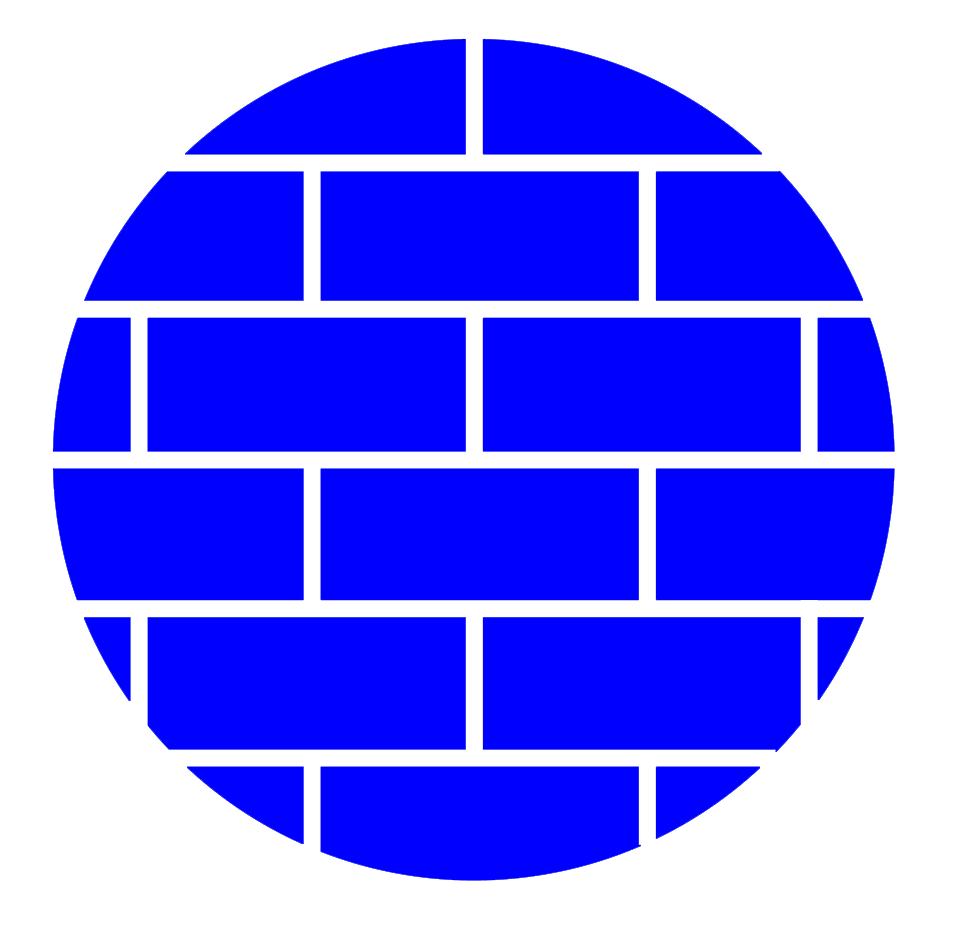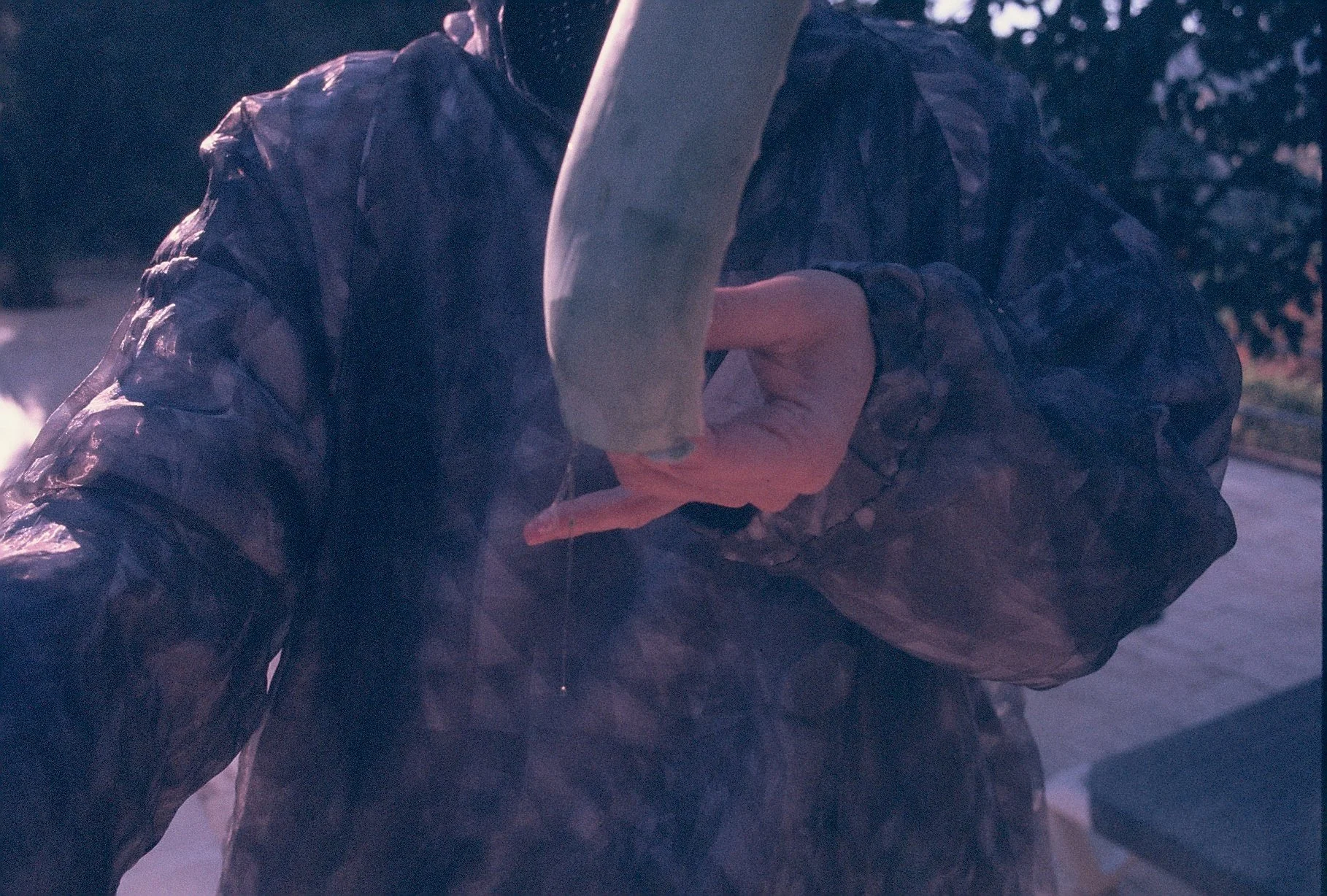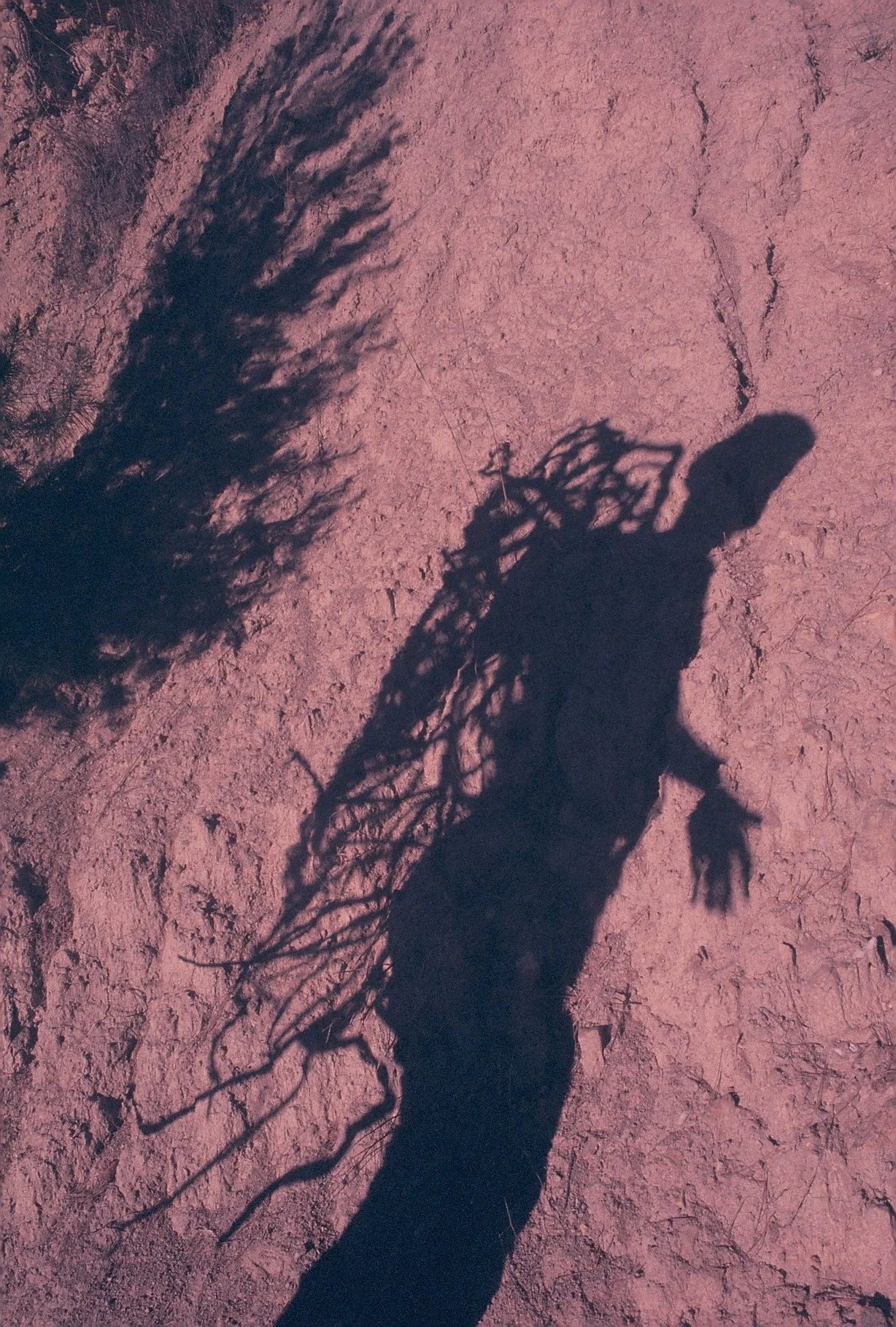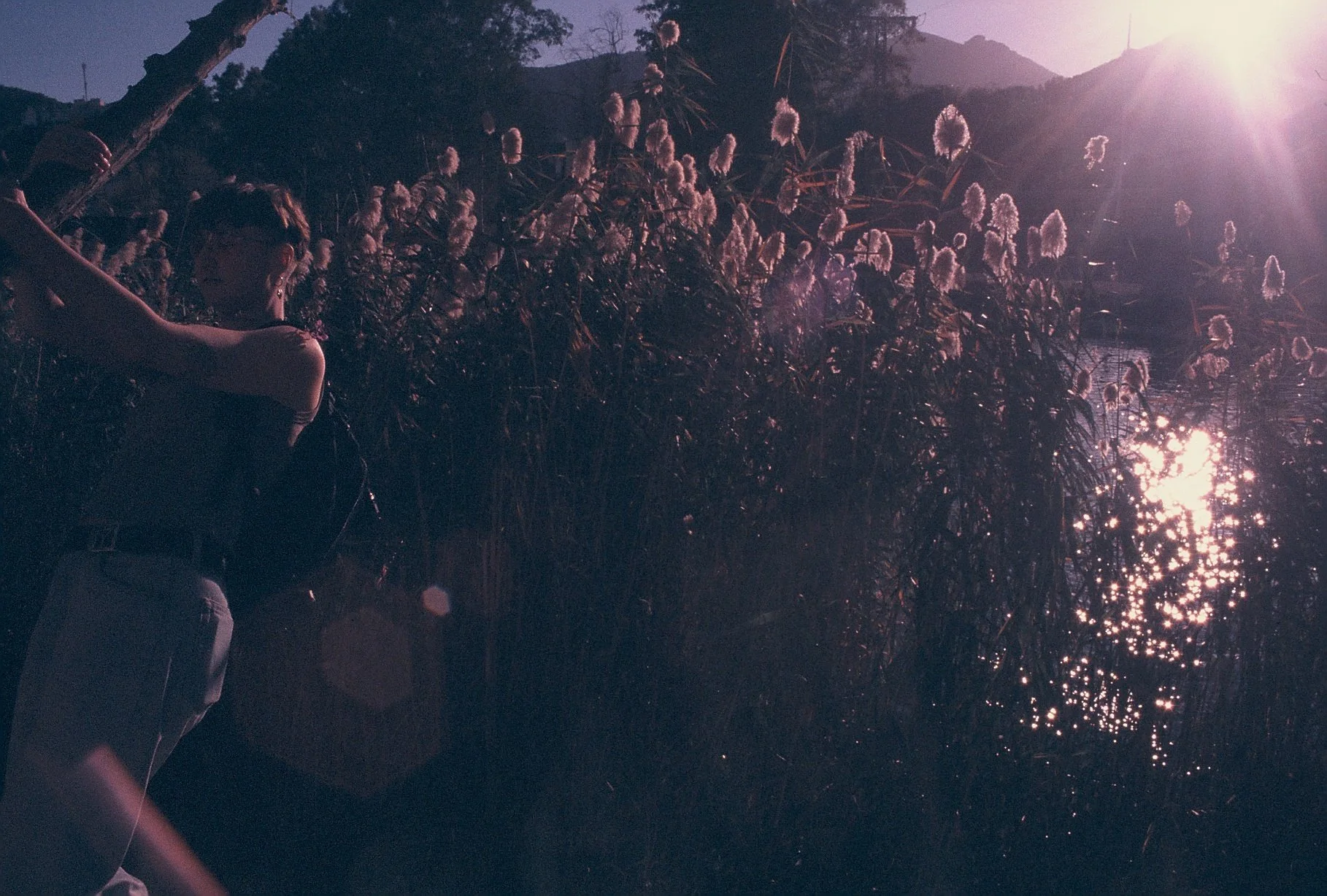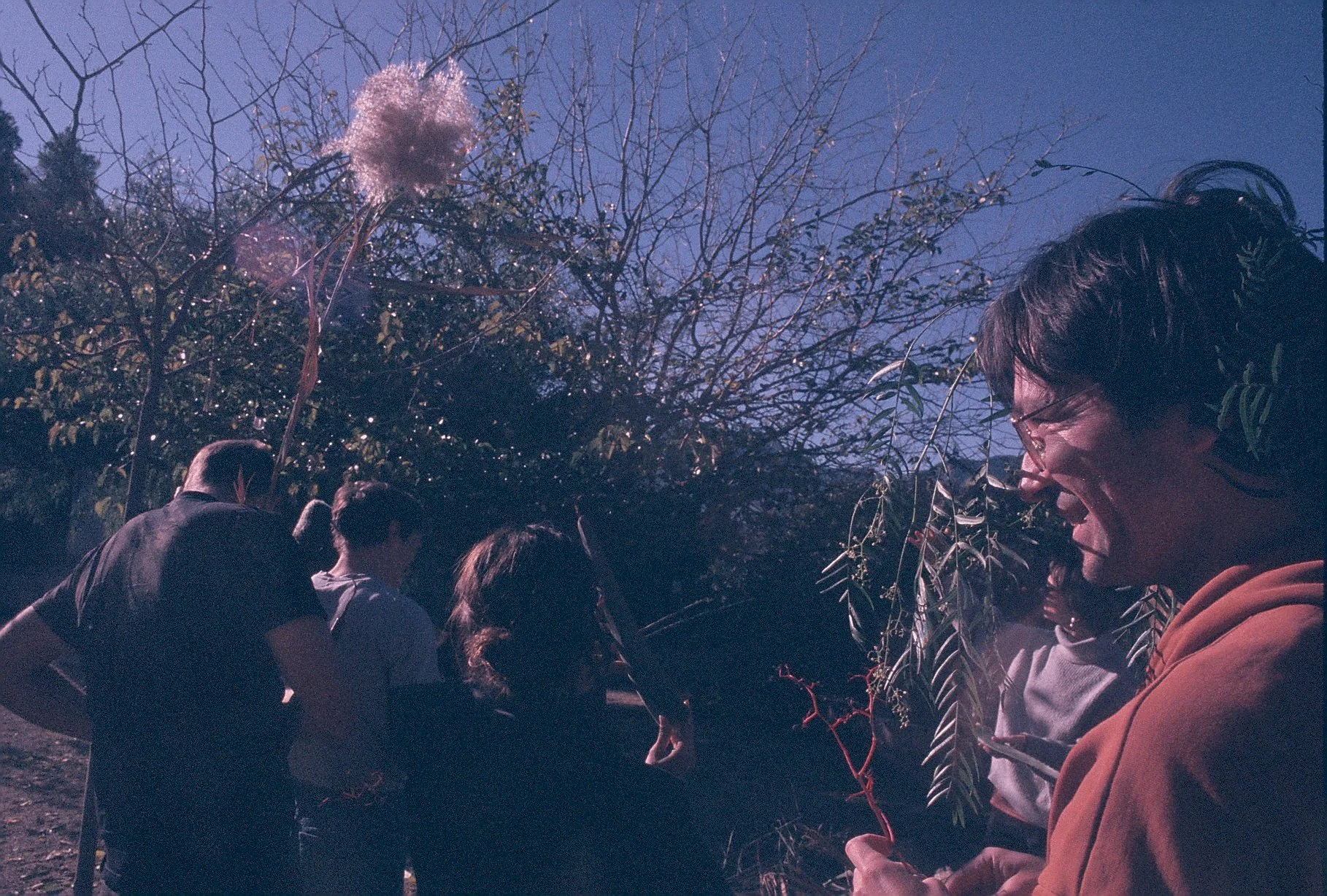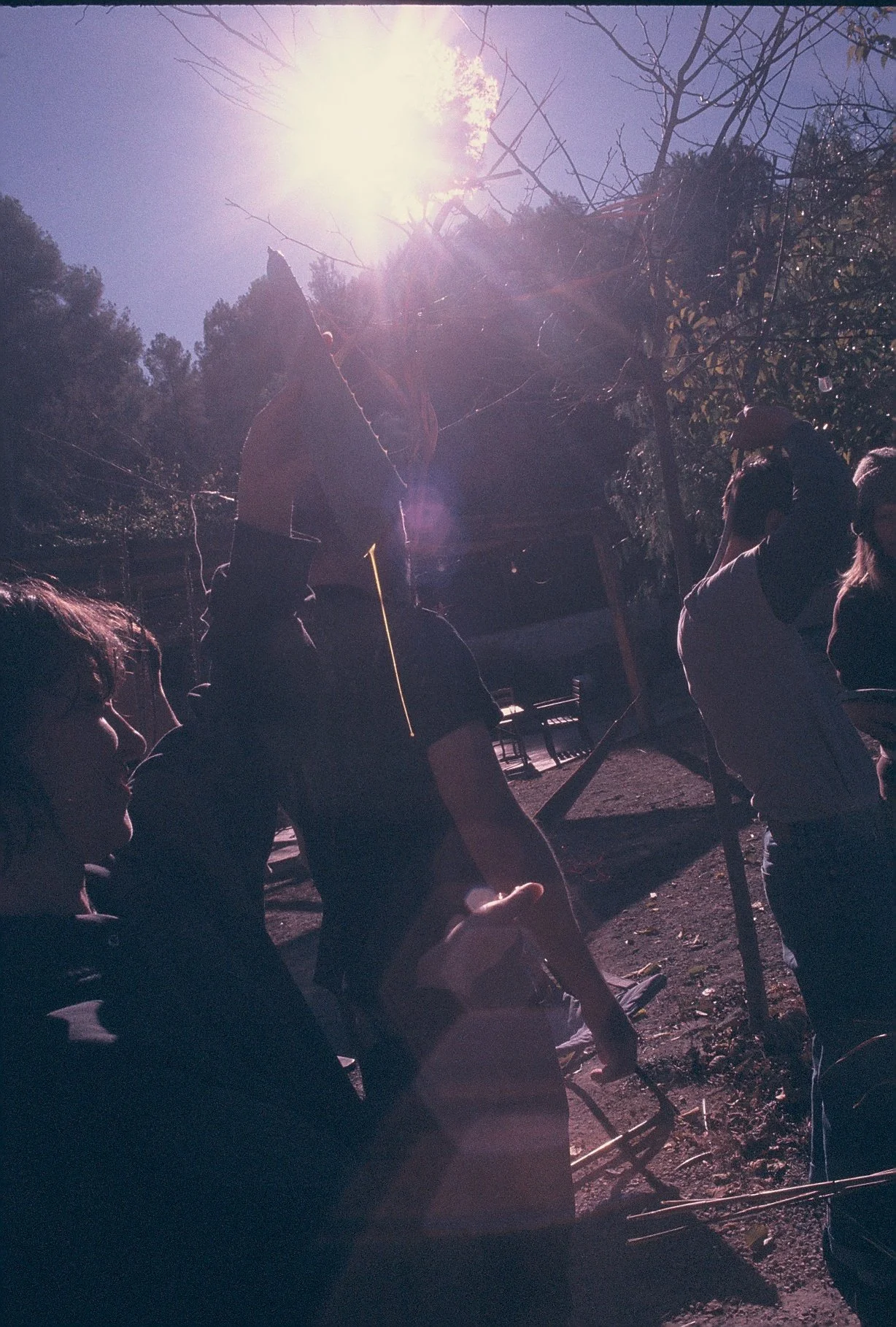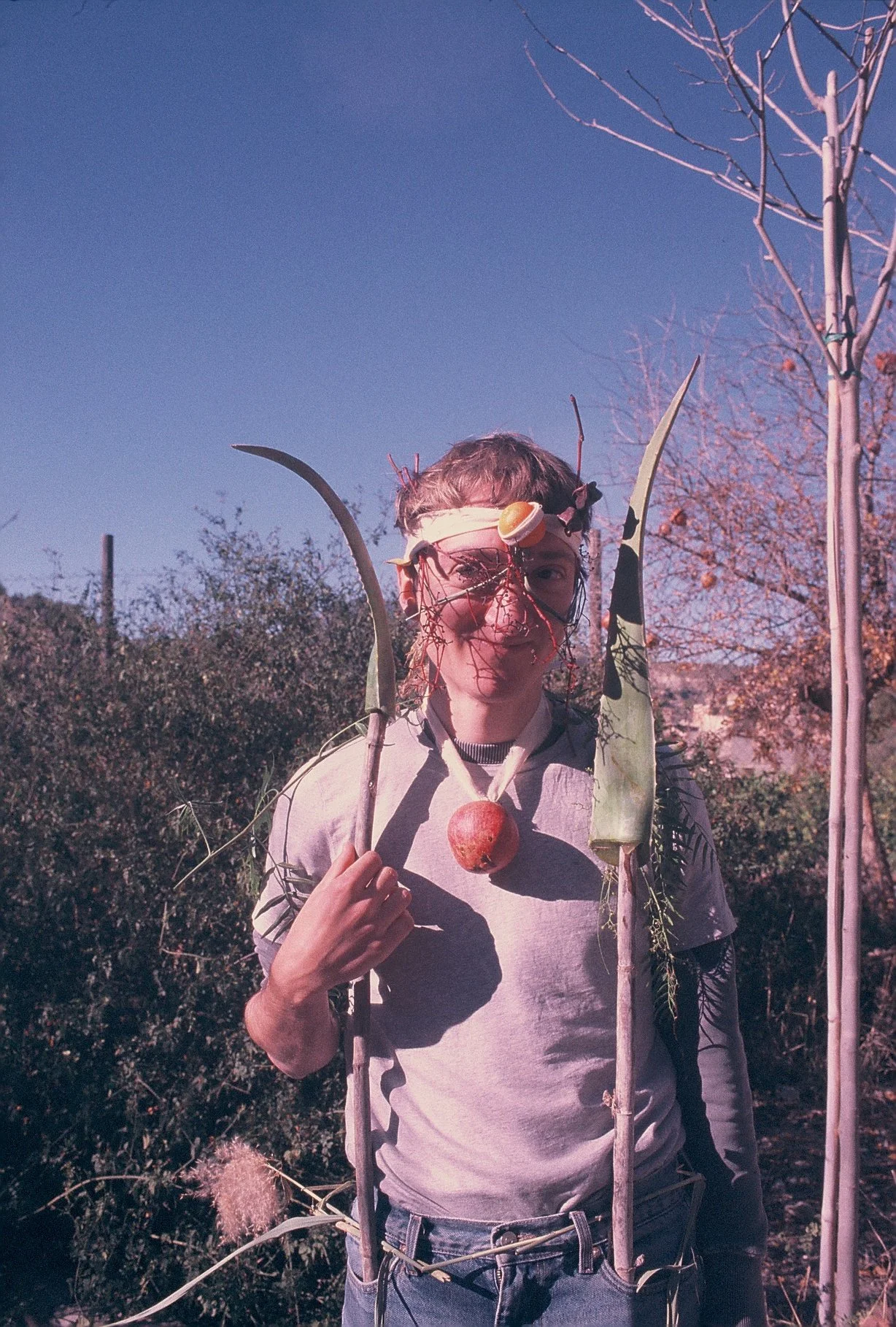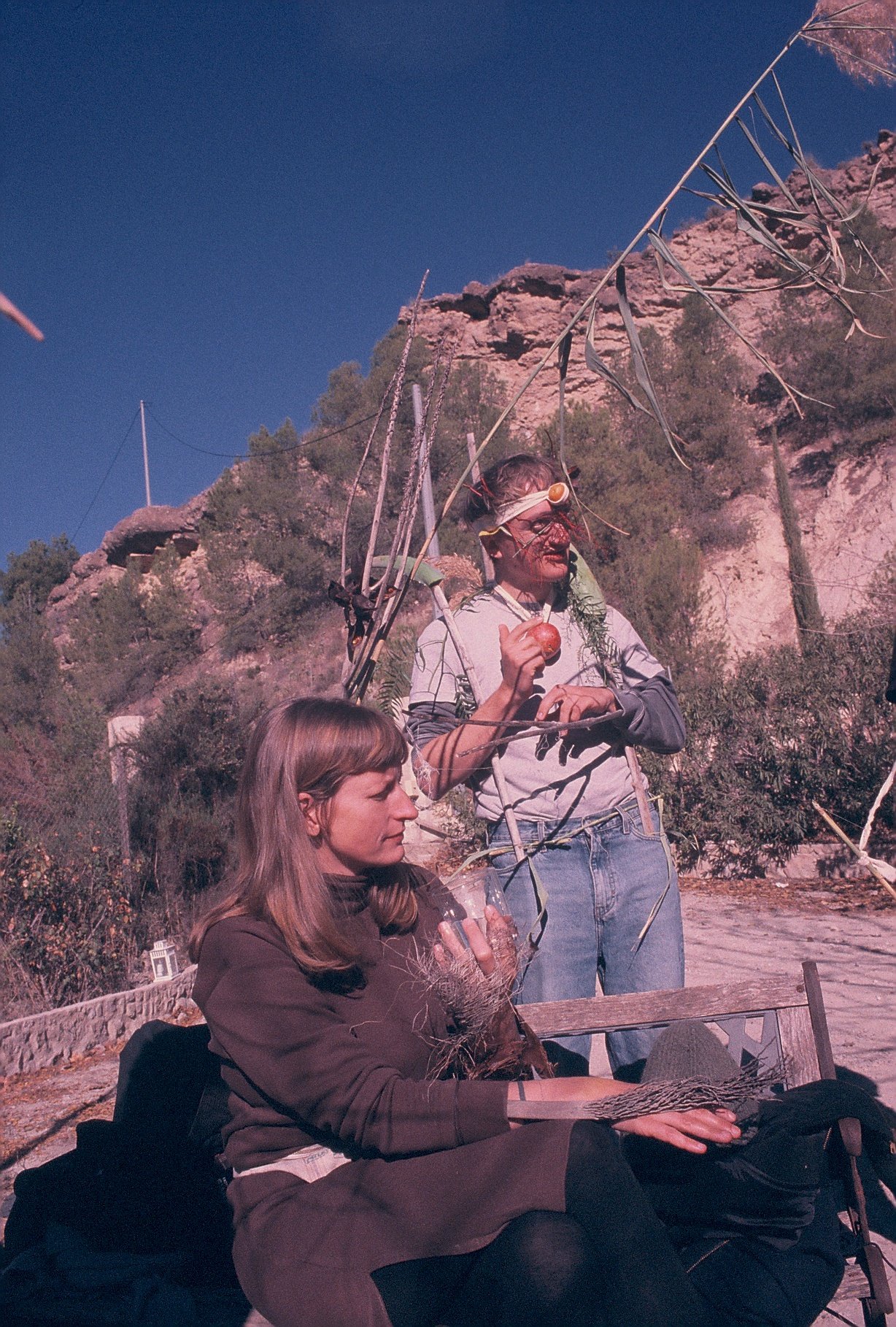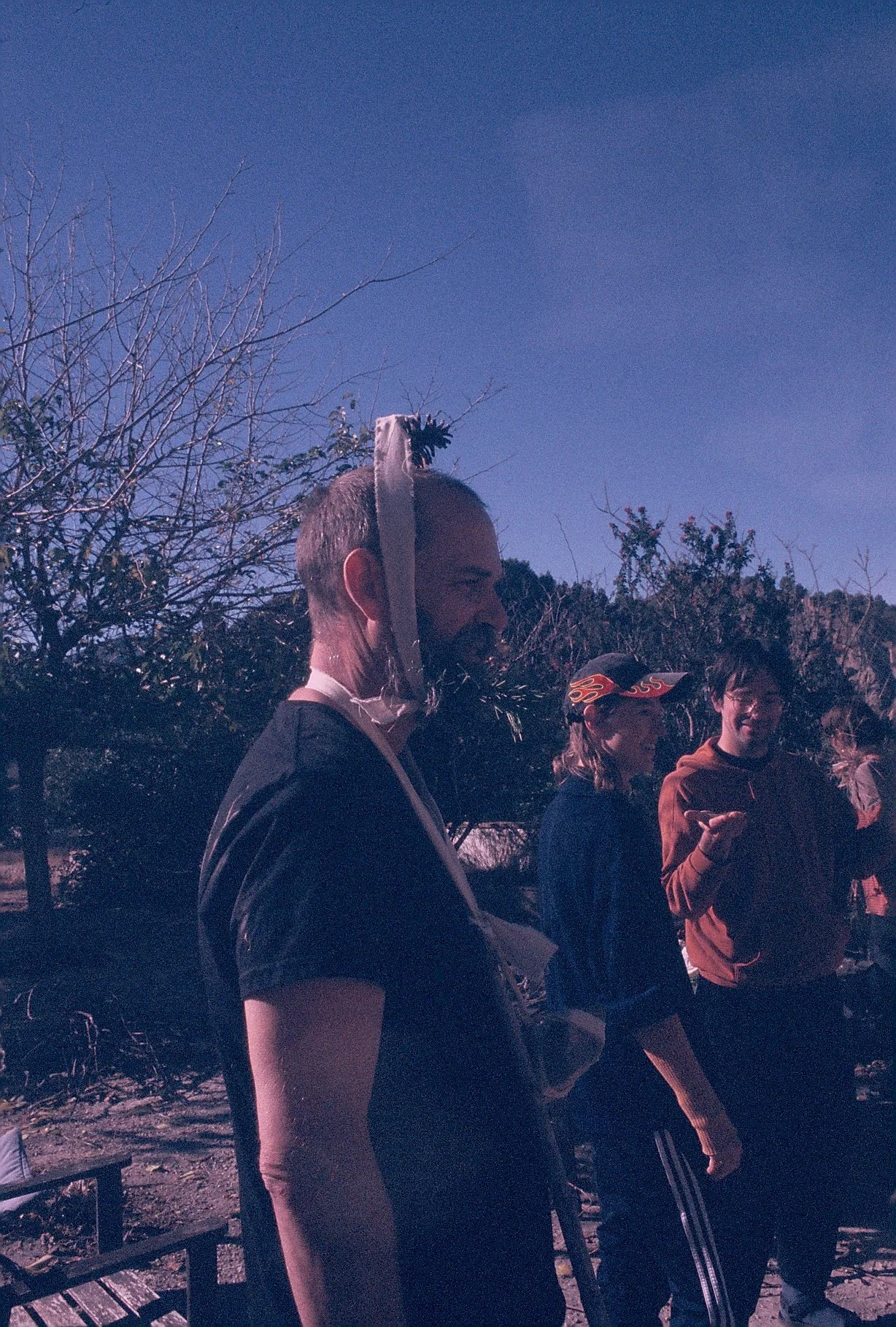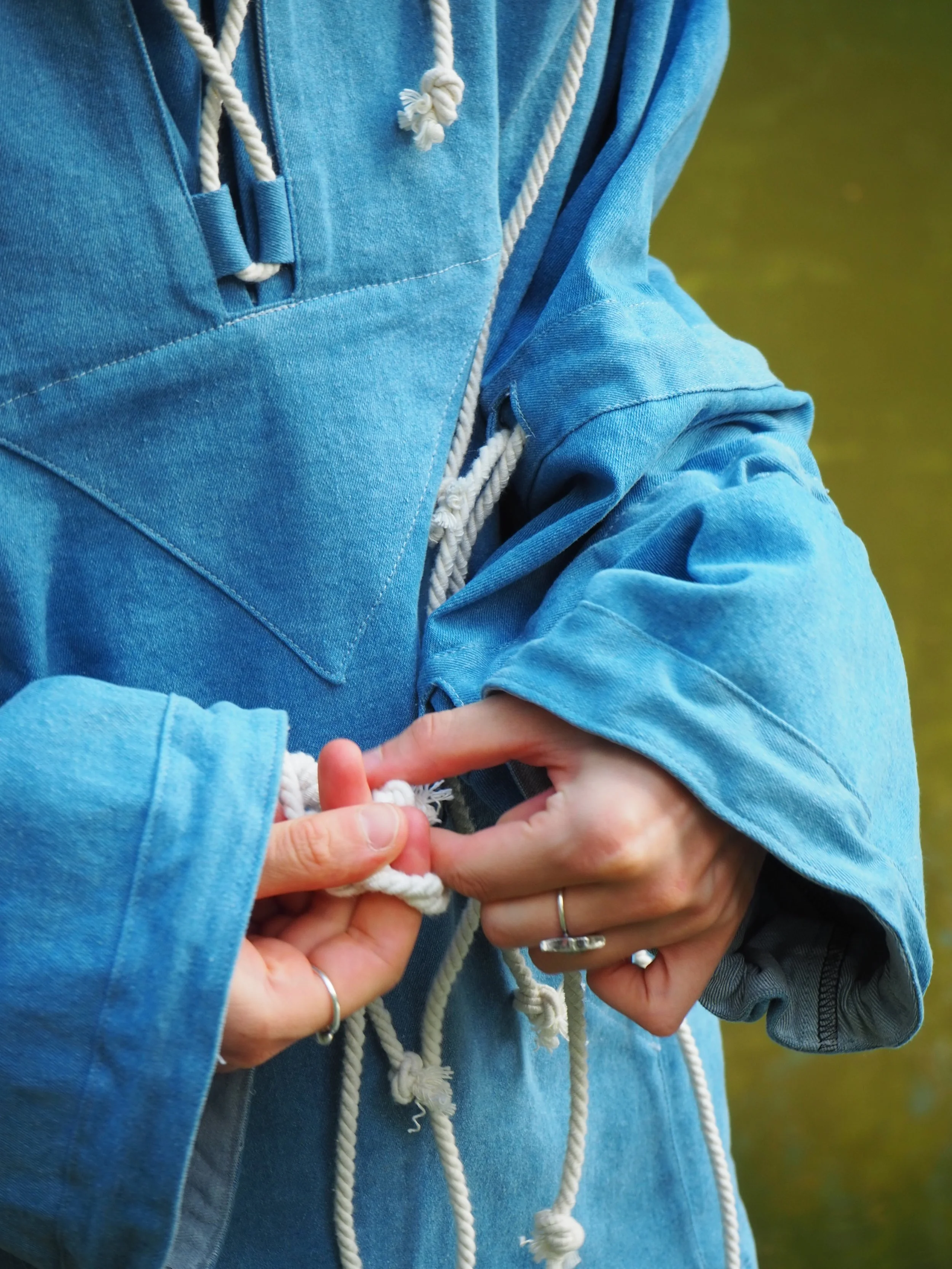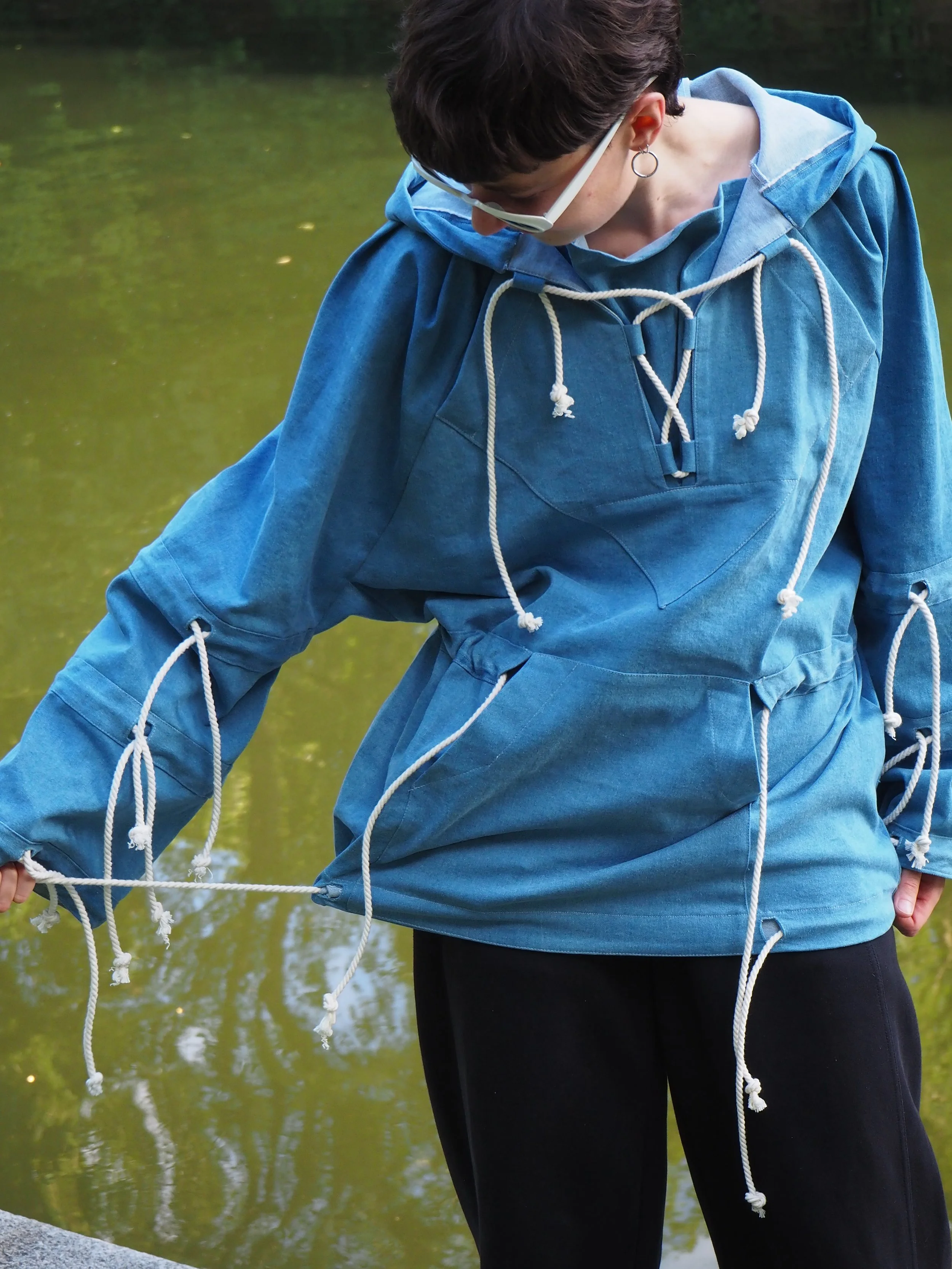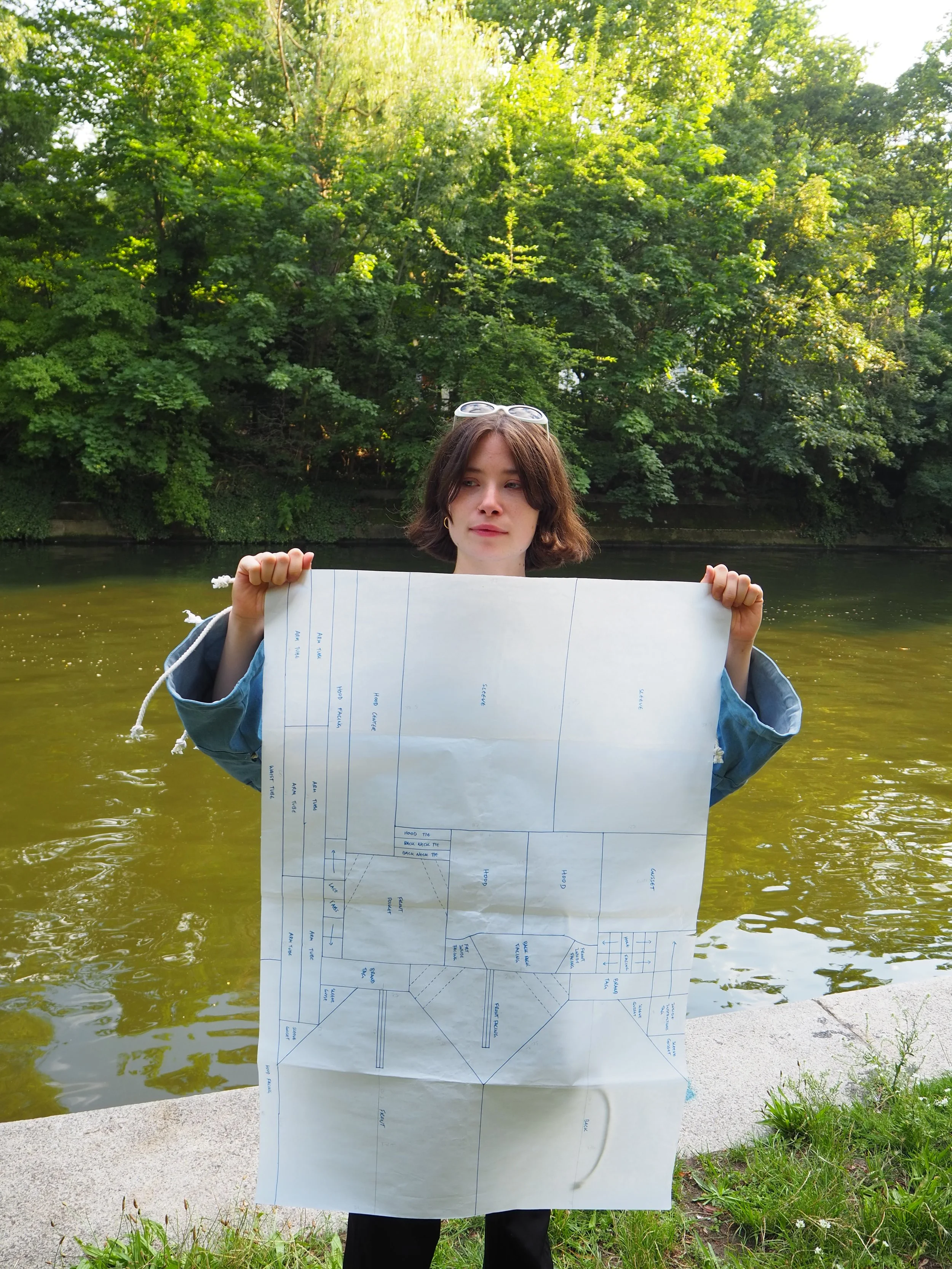
WEARABLE
Naturpathic somaesthetics
at rota festival, December 2023, Blanca, Spain
Workshop & Embodiment Practice by Lou Croff Blake & Madelyn Byrd
Naturopathic Somaesthetics is an exploration in tactile knowledge; it generates a bodily conversation with earth. It is a place-based practice; in its first iteration, we got to know the southern Spanish landscape through the surface of our skins. Leading this workshop on a sunny morning, we asked our participants to fashion foraged organics onto their bodies, and to fashion their bodies onto the earth. It could be as simple as lying down in tall grass, or squeezing a pinecone. As they adorned themselves, we asked practitioners to pay attention to texture, temperature, pressure, movement, sound, and smell. We also gave a loose schema to consider when experimenting with material: hard organics (i.e. tree branches), soft organics (i.e esparto grass), hard minerals (i.e. boulder), and soft minerals (i.e. mud).
‘Naturopathic’ alludes to wellbeing conjured from natural substances. ‘Somaesthetics’ is embodied aesthetic experience; it flips the hierarchy that privileges verbal, narrative experience, and instead centers knowledges that cannot be conveyed in words. We pair these concepts with the practice of automatic fashioning, which, much like automatic writing, channels stream of consciousness; it is an intuitive process of getting dressed. The resulting methodology uses a locavore material palette, and can be transposed into any region and biome. The learning objective is, in a broad sense, a heightened empathy for earth that incites environmental activism. More acutely, we seek the body's knowledge of place beyond verbal description, repositioning the ‘second body’ (earth) as the ‘first home’ (clothing). The somaesthetic memories we hold of Blanca can be described – such as the tickling pressure of wrapping one’s forearms in the pink peppercorn tree’s viney branches, or the sound and texture of inserting an entire hand into a massive aloe steak – but they must be felt to be truly known.
Before beginning our workshop, we shared some light theory with our participants. We ground this practice in biophilic theory, queer theory, regenerative sustainability, and in indigenous wisdoms. We shared Kimmerer’s Honorable Harvest, which sets tenets for foraging with humility and without causing extractive harm. We also shared Halberstam's definition of bewilderment: a queer, rebellious “process of becoming wild by shedding knowledge.” After a few supplementary points of theoretical reference and a guided somatic presencing exercise, we launched our practitioners into playspace.
Photography by Teres Burkova
“I first put the stalks of aloe plant down my pants. When I walk, my body is imobilized at the hip. I feel the pressure of my waistband nicely tug on my back, pulled by the stiff rods. The pronged stalk top jab my shoulders pleasantly; if I shimmy, I feel it in my legs.”
“I lean into a tree. Its long soft leaves dance on my exposed skin. My weight supported by a constellation of contact points, the flexibility of the thin branches allows me to sway buoyantly; I learn the elasticity of its wood through my own springing movements. The sun warms my back, and I learn how it feels the sun at this time of day, too. There is no pain in this one, only pleasure and a soft rocking that soothes.”
“I wear aloe steaks like gloves. With my buck knife, I slice into the thick jelly. It is almost too erotic to be doing in public; fisting aloe. The sounds (like lasagna), the mucus that pulls away on my fingers, which are made pinker in contrast with the acidic bright green. When fully inserted, my hand is transformed into a ridged long point.”
Fashion Hacks
Garments are cultural scripts, semiotic conversations with ourselves and each other.
I’m in the weeds of my gender transition, moving deeper into non-binary wilderness. I mezzo-dose T while continuing to disidentify with masculinity. Out here, traditionally masculinized garments have become an arena for argument, augmentation, and arrival.
I follow a design process that requires unlearning my patented, industry-focused fashion education. It is an invitation to ask “what if” in varying degrees of messiness. The process is guided by intuitions towards embodiment. I don’t second-guess it. I alter the garments into new silhouettes that allow me to land in my skin. The effect is sometimes soothing, sometimes challenging, usually interesting. Hacking clothes brings me into dialogue with my body; it bridges the estrangement that’s been mounting these past few years.
These upcycles and hacks tell my embodiment odyssey, marking islands of thought and feeling that I pass through. One of the greatest joys of living in Berlin is the culture of give-and-take boxes on the sidewalks. On every street, doorways to apartment buildings will have items zu verschenken (to give away), mostly comprising of used garments.
Upcycling has become a core creative process for me, because it lets me digest parallel streams of thought through handwork therapy as well as occupying the body as a discusursive ground. Used garments become material puzzles, both in the patterning and piecing together of elements, as well as the puzzle of eliciting gender euphoria. These dual games simultaneously awaken both spacial/mathmatical and intuitive/emotional modes of thought and decicion making.
My hacks are little experiments, which I test drive in daily life to see what feels right, which hem lines resonate with my gender on any given week, which alterations add value or render the material less desirable (not all hacks work out the way I like).
If you are interested in purchasing a hacked garment or commissioning an upcycle, you know what to do.
AMD: Berlin
2020-2021
The following projects were done at Akademie der Mode & Design’s master’s program Sustainability in Fashion and Creative Industries (SCI).
Circular Denim Challenge | spring 2021
Circular Anorak
Made for a design challenge initiated by Bay City: Use Cradle To Cradle Certified denim to create a garment using circular design strategies. Designed in collaboration with Isabella Rhein.
This zero-waste Anorak was designed to elicit the wearer’s inner child. It’s inspiration is unbridled play, merging functional capability and durability with comfort, while acknowledging material impact.
We chose to include multiple circular strategies in its design:
Zero-waste patterning
Monomaterial construction (biodegradable)
Modular fit
Modular functionality (self-stow bag)
Design for longevity: durability
Design for longevity: emotional bond and garment care
Models: Isabella Rhein & Lou Croff Blake
Double Loop Challenge | Fall 2020
Pantsuit / Plant Suite
Model: Ted Shin
The Double Loop Project is a submission for the Green Product Awards. The concept of a “double loop” is to have two distinct lifecycles, each of equal function, built into one product.
LOOP 1:
An outfit designed for the home workplace
LOOP 2:
A hanging wall organizer / planter
Our double loop design encourages self-expression and creative agency, as well as thoughtful care of the home in the lockdown and beyond. It brings the process of transformation from Loop 1 to Loop 2 into the customer’s hands.
The jumpsuit is screen-printed with the pattern pieces and sewing instructions for the Loop 2. For the surface design, we partnered with Berlin-based screen printer Mr. Bacon. The customer has the option to take scissors to the printed cut-lines and manually deconstruct the jump suit. Following our printed instructions, they will home-sew the pieces into a hanging planter / organizer. It will become a part of an indoor or outdoor garden, or a new feature in their home workspace.
Our hope is that the print on the jumpsuit will inspire conversation with those who see it in Zoom meetings, and spread the empowerment that comes with learning how to sew.
Material: Mudd recycled denim and Desserto cactus leather
Manual Body
spring 2020
The ‘final line’ capstone project at Seattle Central College’s School for Apparel Design & Development.
BRICKS presents Manual Body, their S|S 2021 line of gender-expansive apparel.
NOTE: While this series focuses on physiology, not all humans have physiological hands, and therefore the hand must be viewed as a metaphor.
Hands represent agency, faculty, sensuality, power. Hands are our navigation system, our communication aids, our livelihood. For the queer community, our ability to empower ourselves and each other is our most vital tool. “Manual Body” is a celebration of this ability through a singular motif. I encourage you to find thousands of other motifs that represent queer empowerment; the poetry is infinite.
This is a capstone project for the School of Apparel Design & Development in Seattle, WA.
BUILD SUIT



RUB SUIT



STEP SUIT



CONCEPT DEVELOPMENT


Product Development
2018-2020
These pieces were made at Seattle Central’s School of Apparel Design & Development. Each garment was guided by an assignment, which included the design, patterning, and construction. All designs are original BRICKS.










